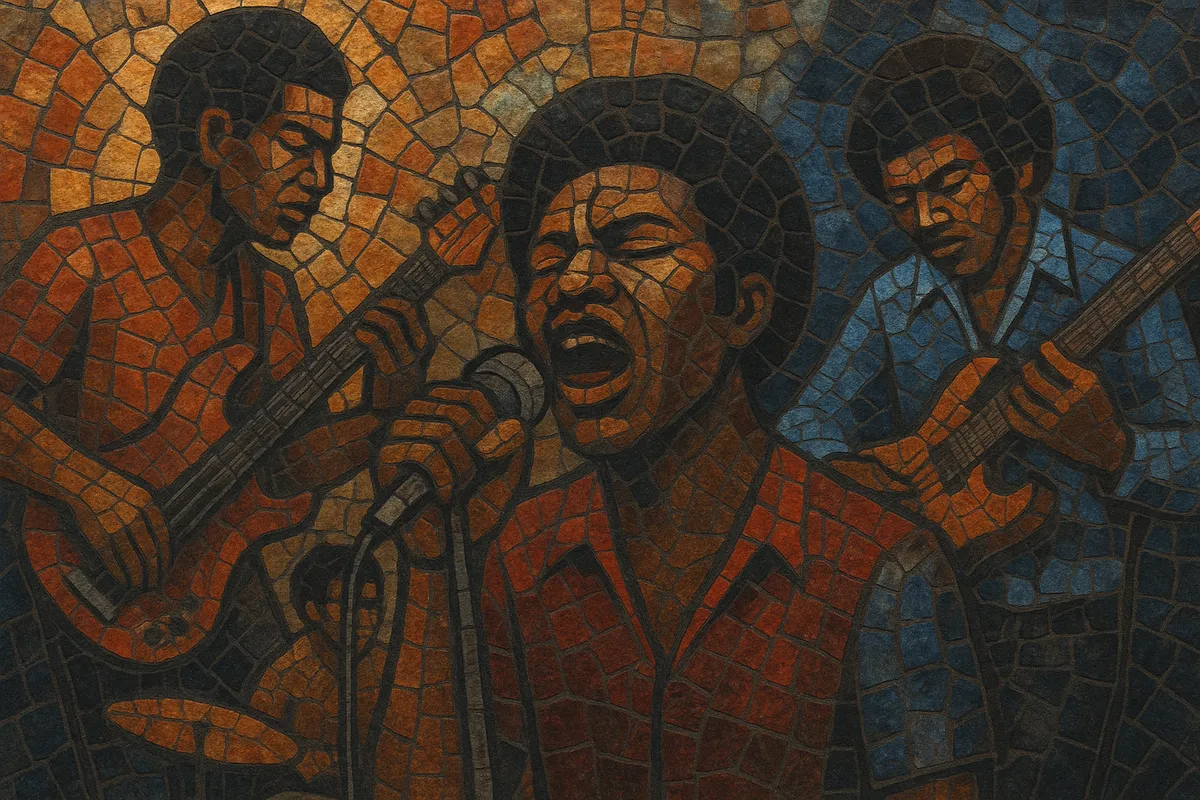Zamrock is a Zambian fusion of hard rock, psychedelic rock, garage rock, and funk that flourished in the early-to-mid 1970s.
Its sound is defined by fuzz-saturated guitars, wah‑wah leads, heavy bass grooves, raw, live-in-the-room drum feels, and gritty, lo‑fi production. Vocals often switch between English and local languages (such as Bemba and Nyanja), with themes ranging from urban life and love to social struggle and post‑independence identity.
Emerging from Lusaka and the Copperbelt’s nightclub circuits, zamrock took the riff-centric urgency of Hendrix-era psych and Sabbath-influenced hard rock and injected it with James Brown-style rhythmic insistence, African call‑and‑response hooks, and extended, hypnotic jams.
After Zambia’s independence in 1964, an expanding urban youth culture embraced electric bands, imported records, and amplified dance music. By the turn of the 1970s, local musicians began blending psychedelic rock, hard rock, garage energy, and funk rhythms into a distinctly Zambian idiom. Clubs in Lusaka and the Copperbelt became incubators for this loud, riff‑driven, groove‑heavy sound soon dubbed “zamrock.”
Zamrock’s signature recordings appeared in the mid‑1970s: W.I.T.C.H. (We Intend To Cause Havoc), Amanaz, Musi‑O‑Tunya (with Rikki Ililonga), the Ngozi Family (led by Paul Ngozi), Chrissy Zebby Tembo, The Peace, and others captured the style’s fuzzed‑out guitars, pounding rhythms, and socially aware lyrics. Records like Amanaz’s “Africa,” WITCH’s “Lazy Bones!!,” Musi‑O‑Tunya’s “Wings of Africa,” and the Ngozi Family’s “Day of Judgement” exemplified the scene’s balance of psych-rock exploration and tight, danceable grooves.
Economic downturns, curfews, fuel shortages, and shifting tastes undermined the club ecosystem that sustained zamrock. Many bands disbanded, and some musicians left music entirely. As the 1980s progressed, new local styles and international pop displaced the heavy, psych‑leaning rock sound.
From the 2000s onward, global record diggers and reissue labels (notably Now‑Again Records) revived interest in original zamrock LPs, revealing a treasure of innovative African rock. Documentaries, reissue campaigns, and international touring by surviving artists (including WITCH’s reformation) reintroduced the genre to new audiences. Zamrock’s raw power and hybrid aesthetics now inform contemporary neo‑psych, garage‑psych, and global rock scenes.


